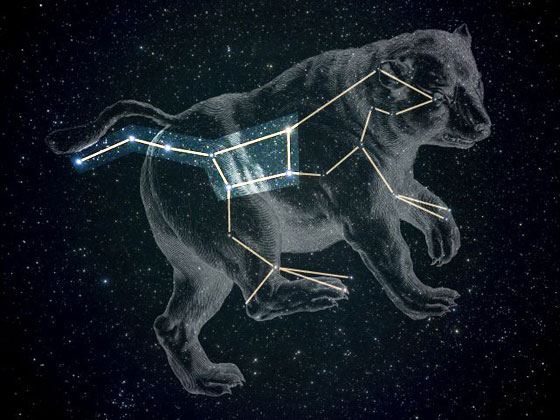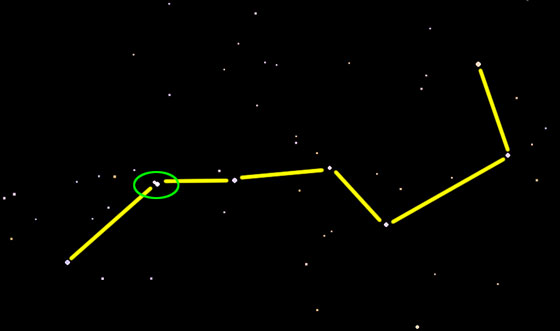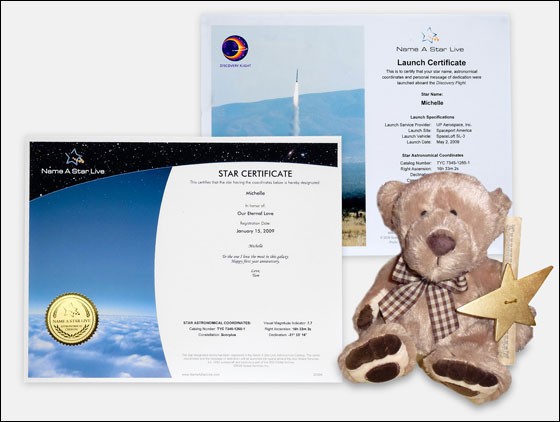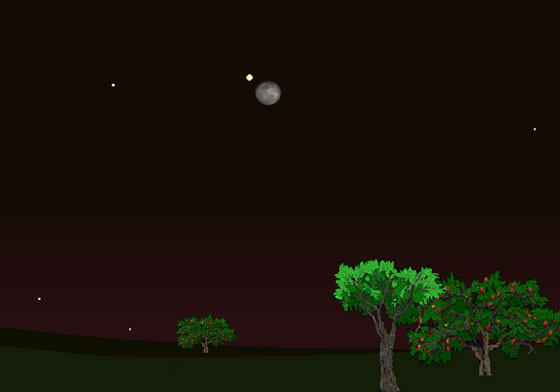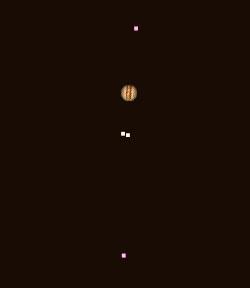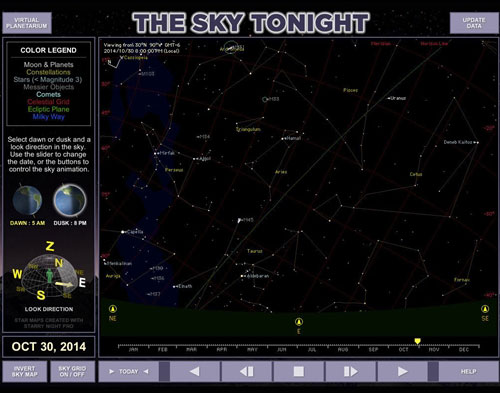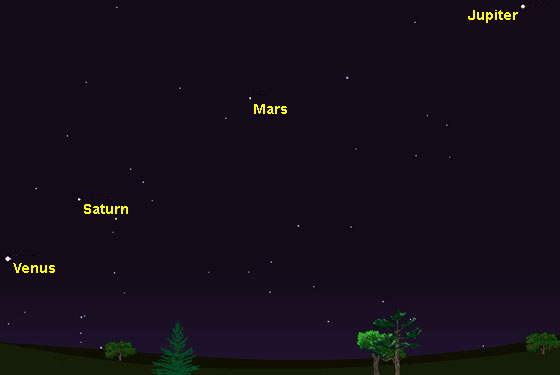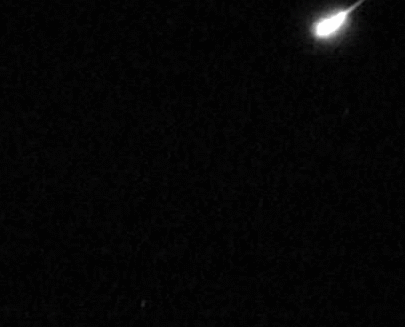
This is a wonderful time to see the beautiful, ringed planet Saturn, which reached “opposition” this month. You can see Mars and Jupiter too!
“Opposition” just means that Earth is directly between Saturn and the sun – Saturn and the sun are on opposite sides of Earth. So Saturn rises in the east as the sun sets in the west. With Saturn at opposition, you can get a very good look at Saturn all month.
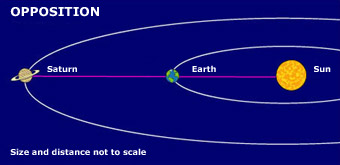
Saturn will be in the constellation Ophiuchus throughout the month. Ophiuchus is one of the constellations of the zodiac, like Aries, Taurus and Cancer. But it’s the one constellation of the zodiac not used for birth signs.
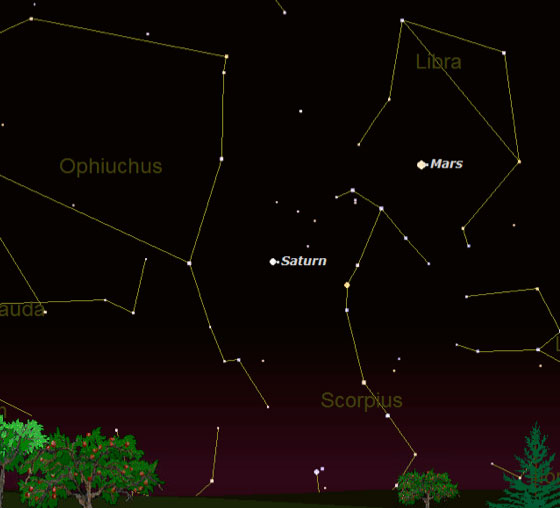
If you live in the northern hemisphere of Earth, look for Saturn toward the southeast about an hour or so after sunset. It will be the bright point of night just to the east of the bright constellation Scorpius. If your telescope is powerful enough, you will be able to see the dark gap in the rings known as the “Cassini division,” named after the French astronomer Jean D. Cassini who discovered the gap in 1675. While you’re checking out Saturn with your telescope, take a look at nearby Mars: If you look closely, you may see Mars’ ice cap!
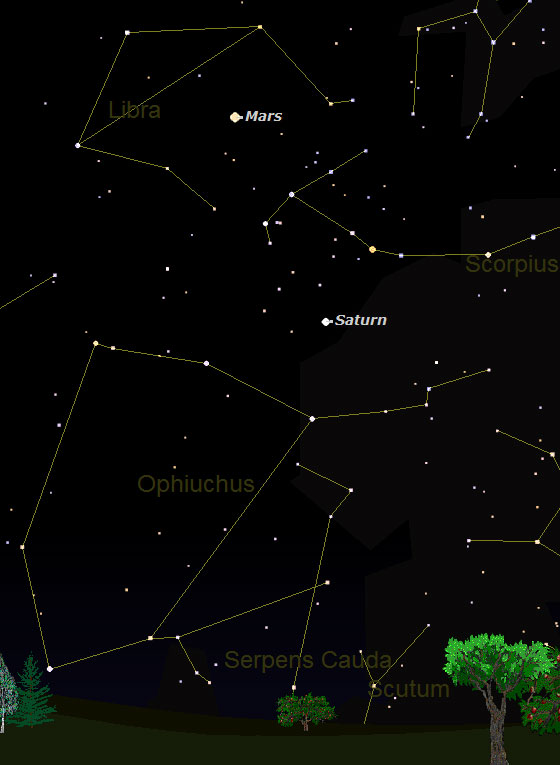
Fun Fact!
Saturn is the basis for the “Father Time” figure we see every New Year.

Father Time is usually depicted as an old man carrying a harvesting scythe, usually with the baby New Year. Actually, this association of Saturn with Father Time is an historical error that can be traced back to at least the Renaissance when the Roman god Saturn was mistakenly confused with the Greek god Chronos, god of time. Saturn was the Roman version of the Greek god Cronus, which sounds a lot like Chronos! So it’s easy to see how the two names could be mixed up! Just to be clear:
- Cronus was the ancient Greek god who was the father of Zeus, king of the gods. The Romans adopted Cronus and renamed him Saturn, and adopted Zeus and renamed him Jupiter. In other words, Saturn was the father of Jupiter.
- Chronos was the ancient Greek god of time. (We get the word “chronological” from Chronos.) But the names Cronus and Chronos were confused during the Renaissance (if not earlier), and the Father Time figure was thus associated with Saturn by mistake.
See Saturn’s son Jupiter this month too!
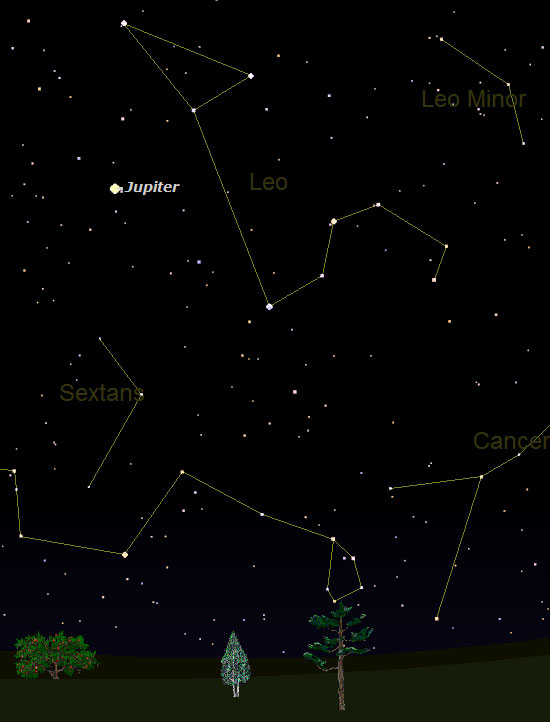
Jupiter, the son of Saturn and king of the gods, is also the name of the king of the planets. It’s easily seen in the constellation Leo throughout the month of June. Jupiter will be the brightest object in Leo this month — except when the Moon passes by!
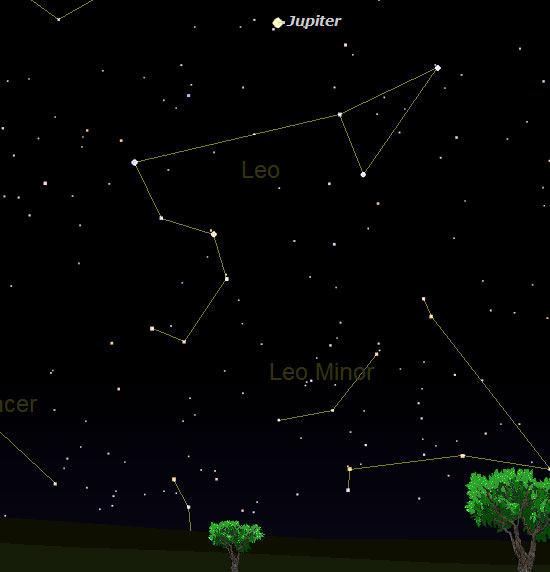
Did you know you can use the Moon to find constellations in the night sky? Follow us on Twitter where we post information each day about what constellation (area of the night sky) the Moon is in that evening.
Name A Star Live offers some really good tools to learn about the night sky and find your star’s constellation. Visit our website to learn about our Virtual Planetarium software, planisphere constellation finder, and First Light Astronomy Kit!
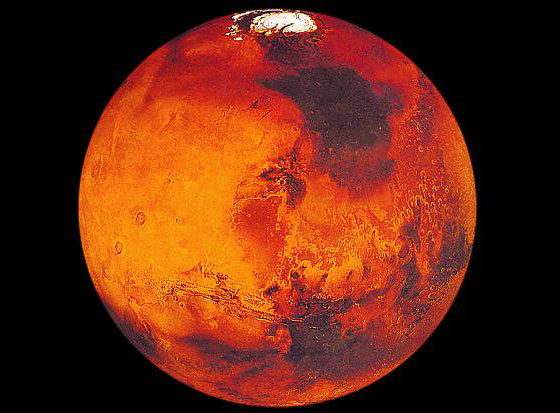


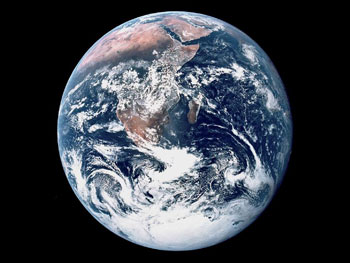 Our missions don’t pollute outer space.
Our missions don’t pollute outer space.
